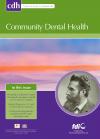Community Dental Health

- Cover Date:
- September 2008
- Print ISSN:
- 0265 539X
- Vol:
- 25
- Issue:
- 3
Association between breastfeeding duration and non-nutritive sucking habits
Objective To evaluate the relationship between breastfeeding duration and the prevalence of non-nutritive sucking habits in children with deciduous dentition. Method A cross-sectional survey was conducted on the mothers of 551 children aged 3 to 6 years, randomly selected from public pre-schools in São Paulo, Brazil. Mothers were asked to complete a questionnaire that included items regarding their children’s age, gender, race, method and duration of infant feeding, as well as pacifier use and/or digit-sucking habits. According to the answers pertinent to the method and duration of infant feeding, children were assigned to five groups: 1 – never breastfed, 2 – breastfed for a period shorter than 3 months of life, 3 – breastfed for 3 to 6 months, 4 – breastfed for 6 to 9 months, and 5 – breastfed for 9 months or longer. Data were submitted to the Fisher’s exact test with Bonferroni correction for multiple comparisons to analyse possible associations between breastfeeding duration period categories and non-nutritive sucking behaviours. Results Pacifier use frequency was high in groups 1, 2, 3 and 4 (85%, 87.6%, 78% and 70%, respectively), in comparison with that in group 5 (38.6%). The prevalence of non-nutritive sucking habits was significantly reduced in children who were breastfed for nine months or longer (p=0.000). There were no statistically significant differences in the frequencies of pacifier use and/or digit-sucking habits between genders, regardless of the breastfeeding duration period. Conclusion Children aged 3-6 years who were breastfed for nine months or longer had a lower prevalence of non-nutritive sucking habits.
Key words: Breastfeeding, deciduous dentition, sucking habits
- Article Price
- £15.00
- Institution Article Price
- £
- Page Start
- 161
- Page End
- 165
- Authors
- H. Scavone-Jr, C.H. Guimarães-Jr, R.I. Ferreira, A.C.R. Nahás, F. Vellini-Ferreira
Articles from this issue
- Title
- Pg. Start
- Pg. End
- Comparison of two methods in deriving a short version of oral health-related quality of life measure.
- 132
- 136
- The presenting complaints of low income adults for emergency dental care: An analysis of 35,000 episodes in Victoria, Australia.
- 143
- 147
- Cariogenic and erosive potential of the medication used by HIV-infected children: pH and sugar concentration
- 170
- 172
- Enamel fluorosis in 12- and 15-year-old school children in Costa Rica. Results of a National Survey, 1999
- 178
- 184
- Short Communication - Fissure sealants on permanent first molars – consequences of a one-year delay
- 191
- 192
